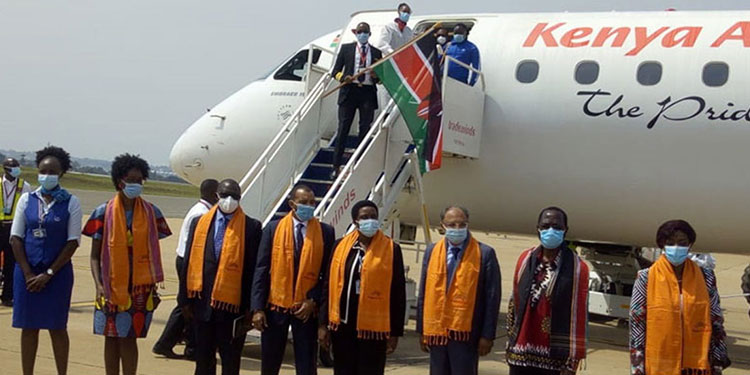
Kenyan President Uhuru Kenyatta has announced a national Covid-19 conference on September 28, in which he is expected to address re-opening bars and easing a 9pm to 4am curfew.
Tanzania already re-opened all its institutions, and Uganda is set to resume international flights from October 1. Kenya partially eased its night-time curfew by three hours in June, and also lifted travel restrictions affecting Nairobi and Mombasa.
“Flattening the Covid-19 curve is a national endeavour that requires action at the individual, community, county, and national levels. Every one of us must play our part for Kenya to triumph over the disease,” said Kenya’s Head of Public Service, Joseph Kinyua, in a statement to the media last week.
According to a survey conducted last week by the East African Business Council (EABC), EAC partner states are expected to lose more than $54 billion of local tourists spending for 2020, on account of protracted closures of seaports and airports.
Tanzania, which had locked out Kenyan flights following a spat over Covid-19 restrictions, recently lifted the ban. Kenya Airways resumed flights to 30 destinations on August 1, after grounding of its fleet in March to stem the spread of the virus. Kenya has also eased the entry of nationals from Egypt, Ghana, Nigeria, Cameroon, Gambia, and Sierra Leone, among other countries.
EABC commended the resumption of air transport services in the region, saying that the flight ban had ground some businesses to a halt.
“This will spur regional tourism, intra-EAC trade and bilateral trade between Kenya and Tanzania, offering steady business and economic rebound. In 2019, the value of Kenya’s exports to Tanzania stood at approximately $336 million, while imports were $275 million,” said Peter Mathuki, the EABC chief executive.
“With the two countries re-opening their airspaces to each other, we are confident that this will increase demand for travel services, ease movement of people, integrate logistics value chains for exports of goods, open access to a larger market and boost regional tourism.”
Decreased trade:
Comparing March-July 2020 to the same period last year, the private sector analysis indicates that the value of Kenya’s exports to Tanzania decreased by 9.8 per cent, while imports fell by 29.4 per cent.
From March to July 2020, Kenya’s exports to Tanzania stood at $169 million and imports at $135 million. To reduce the high cost of flying, the EABC wants EAC member states to consider waiving landing fees, reducing excise duty on aviation fuel, navigation, landing, parking and Covid-19 related fees.
Last week, President Yoweri Museveni instructed the national taskforce on Covid-19 to examine the possibility of a phased re-opening of the country’s international airport, schools and places of worship.
“The international airport and land borders will now be opened for tourists coming in and going out, provided they tested negative 72 hours before arrival in Uganda, and provided the tour operators ensure that the tourists do not mix with Ugandans,” said President Museveni. Airlines expected to resume flights in Uganda include the national carrier Uganda Airlines, Kenya Airways, Qatar Airways, Air Tanzania, Ethiopian Airlines, Fly Dubai, RwandAir, KLM, Turkish Airlines, Emirates, Brussels Airlines and Tarco Aviation.
Just hours after Uganda announced resumption of flights, RwandAir announced that it will resume its operations in and out of the Entebbe International Airport on October 1. Burundi, whose schools did not close during the Covid-19 outbreak, has re-opened its border with the Democratic Republic of the Congo to allow trade between the two countries.
Despite a perceived lack of transparency over the extent of Covid-19 infections in Tanzania, foreign tourists have been visiting the country. President John Magufuli declared victory against the deadly pandemic in June, saying social and economic activities, including, tourism would continue. Tourism and the hospitality industry were hit hard by the pandemic as a number of hotels in the region issued closure notices.
